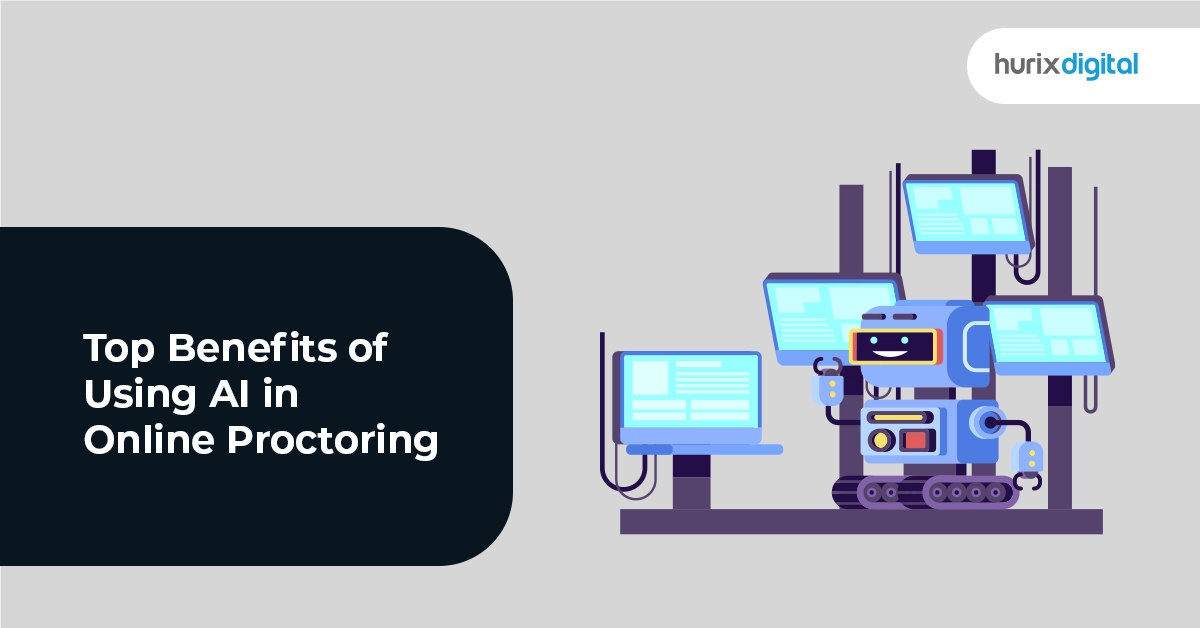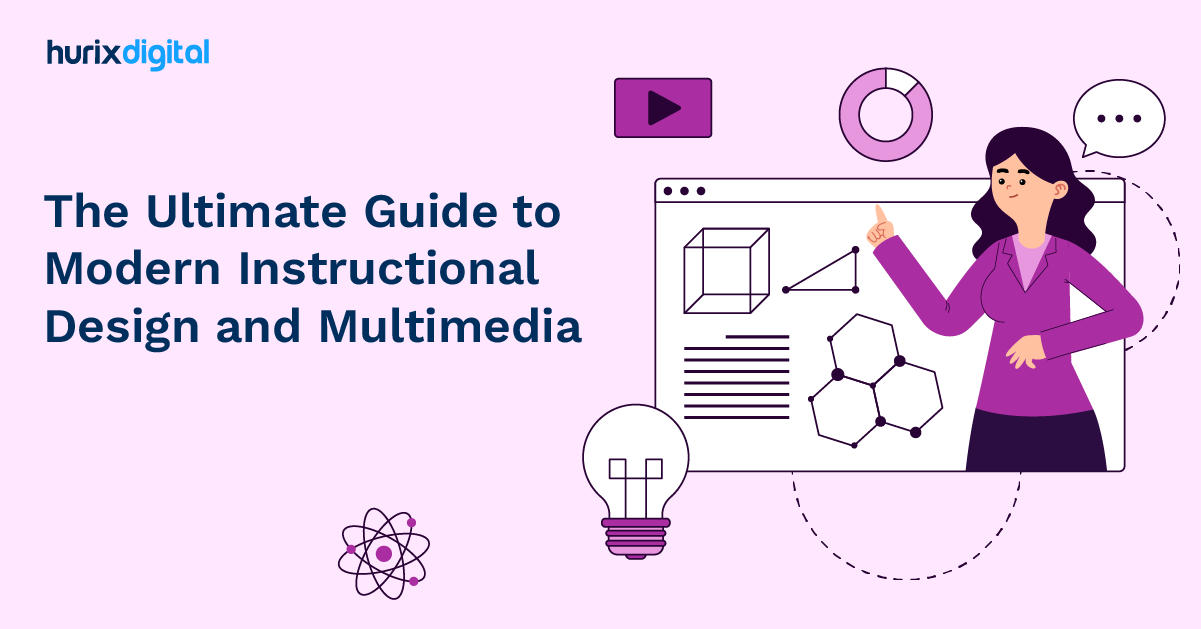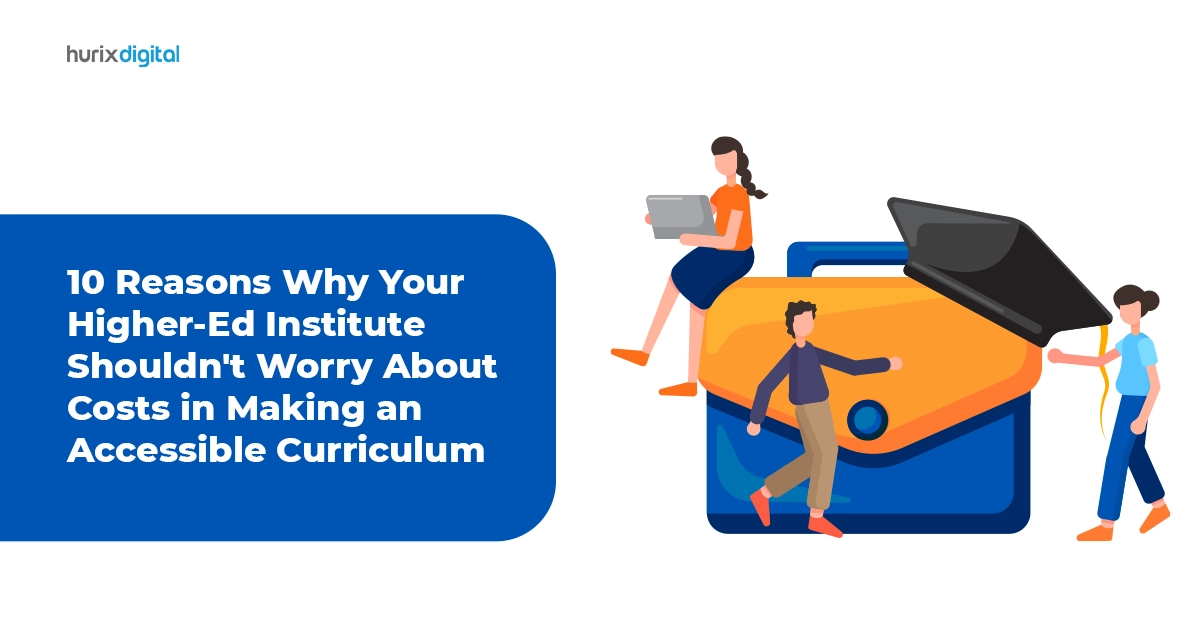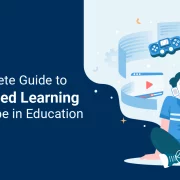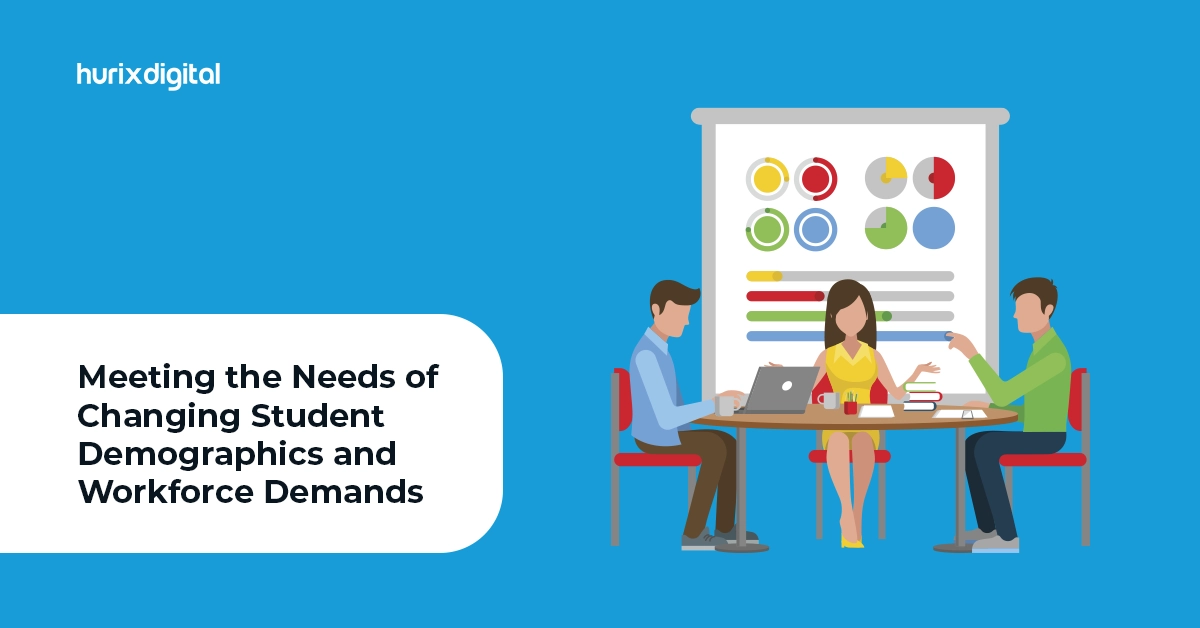
Meeting the Needs of Changing Student Demographics and Workforce Demands
Summary
Learn how higher education institutions can adapt to changing student demographics and workforce demands. This article provides strategies for addressing evolving educational needs.
Educational institutions today must adapt to changing student demographics and workforce demands. This requires a broad approach to ensure students succeed and are ready for the job market.
When it comes to higher education, students are more diverse in their backgrounds and needs than ever before. Similarly, the job market is constantly evolving, requiring new skills and competencies. To navigate these changes, institutions must embrace diversity in education and respond to job market shifts.
This post will highlight strategies for addressing these changes in student demographics and workforce needs. Read on!
Table of Contents:
- Changing Student Demographics: An Overview
- Strategic Approaches to Address Evolving Student Demographics and Workforce Needs
- Final Words
Changing Student Demographics: An Overview
One of the most prominent trends in higher education that influences the whole domain is the diversified student demographics. These classrooms represent a variety of mixed perspectives and experiences, including ethnic and racial interpretations, socioeconomic backgrounds, cultural heritage, and sexual orientation, among others.
Therefore, this educational diversity presents many opportunities for creating a more inclusive learning environment and facilitating better cross-cultural understanding. At the same time, such diversity poses an urgent demand for educators to make their lessons suitable and relatable for students with varied upbringings.
Hence, educational institutions are required to have pedagogical frameworks that include students’ unique capacities, abilities, and even conditions to qualify them for success. This means that teachers must adopt culturally responsive teaching methods, integrate multiple views into the syllabus, and offer targeted assistance to learners who are burdened by institutional barriers.
Therefore, every learner will achieve maximum educational outcomes and well-being when educators create an inclusive learning environment where all students feel respected, supported, and empowered.
Also Read: Top 10 AI-Based Assessment Tools for Higher Education in 2024
Strategic Approaches to Address Evolving Student Demographics and Workforce Needs
Here are the key strategies educational institutions can implement to meet the needs of changing student demographics and workforce demands:
1. Adapting Curriculum to Workforce Demands
To remain up-to-date with changing student demographics, the needs of the modern labor market are also changing rapidly. Technological changes, economic shifts, and globalization have transformed the skills and competencies that are required for success in today’s job market.
Educational institutions have an important role to play in equipping students with the knowledge, skills, and competencies they need to be successful in an increasingly complex and interdependent world.
This necessitates a rethinking of curriculum design to match evolving workforce demands. Interdisciplinary approaches that incorporate STEM (science, technology, engineering, and mathematics) with arts, humanities, and social sciences can nurture innovation through creative thinking and holistic problem-solving abilities.
Also, practical learning opportunities such as internships, apprenticeships, project-based education, and service-learning initiatives enable students to use their theoretical knowledge in actual practice, thus improving their employability prospects as well as their career readiness. Institutions of higher learning can work hand in hand with industry partners to ensure that these institutions offer curricula that meet industry requirements.
2. Identifying Diversity as an Asset
Diversity in the student body usually includes variations in nationality, ethnicity, culture, socioeconomic status, language proficiency, capabilities, and more. Academic institutions must acknowledge this diversity not merely as a challenge but as a vast array of experiences and viewpoints that enhance the learning environment.
1. Cultural Competency
Teachers must strive to understand and appreciate their students’ cultural backgrounds. This involves incorporating diverse viewpoints into learning curricula, promoting inclusive classroom environments, and providing support assistance tailored to the requirements of different cultural groups.
2. Terminology Access
Given the rapid increase in globalization, many educational institutions cater to students from different linguistic backgrounds. Providing language support services, such as ESL (English as a Second Language) programs and multilingual resources, is important for ensuring that language barriers don’t restrict learning.
3. Equity and Inclusion
Promoting equity involves handling systemic barriers that restrict certain groups from following the latest education and employment trends. These inclusive education practices ensure that all students, regardless of their background, feel valued and supported throughout their academic journey.
3. Aligning Education with Workforce Demands
As technological advancements, economic shifts, and consumer demand change the job market, educational institutions must evolve their offerings to provide students with the skills and knowledge needed to succeed in tomorrow’s workforce.
1. STEM Education
With the rising importance of science, technology, engineering, and mathematics fields, an increasing amount of attention has come to integrating STEM education into other disciplines.
As per a recent study by the Bureau of Labor Statistics (BLS), it is projected that employment in STEM occupations will grow by 8% by 2029, much faster than the average for all occupations. The increase in the percentage of students taking up STEM subjects can reduce the gap in the skill shortage that is felt in these areas.
2. Soft Skills Development
Besides technical competencies, employers place ever more value on soft skills like communication, critical thinking, teamwork, and flexibility. According to a survey conducted by the National Association of Colleges and Employers (NACE), business organizations usually prioritize soft skills in addition to technical competencies when hiring new graduates.
Therefore, adding experiential learning in the form of internships, co-op opportunities, and project work would further sharpen skills and ensure holistic professional development relevant to the workplace.
3. Lifelong Learning
The concept of lifelong learning is gaining traction as professionals recognize the need to continuously upskill and reskill to remain competitive in the job market. Educational institutions can support lifelong learning initiatives by offering flexible learning pathways, micro-credentialing programs, and continuing education opportunities for alumni and working professionals.
Also Read: 15 Best Online Learning Platforms for Higher Education in 2024!
Final Words
Educational institutions, policymakers, organizations, and other stakeholders must collaborate in order to meet the needs posed by changing student demographics and workforce requirements.
By embracing diversity, linking education with workforce demands, and using technology for personalized learning, you can build inclusive learning settings where students will prosper throughout their lives.
With innovative solutions designed to cater to both learners and educators of different types, Hurix Digital is determined to change the way you interact with educational content.
Whether you are an educational institution that wants better student outcomes or a corporate organization interested in upskilling its employees, these creative platforms, along with individualized methods of study, are aimed at helping you achieve success.
Contact us to learn more about Hurix Digital’s innovative automation solutions now!

Senior Vice President
A Business Development professional with >20 years of experience with strong capability to sell new solutions and develop new markets from scratch. New Market Entry Specialist with experience of working in two of the largest emerging markets – China & India. Also covered other key markets in APAC, US, EU & ME. Exceptional experience of conceptualizing, ideating and selling new learning technologies like VR AR, etc. across multiple industry verticals.
